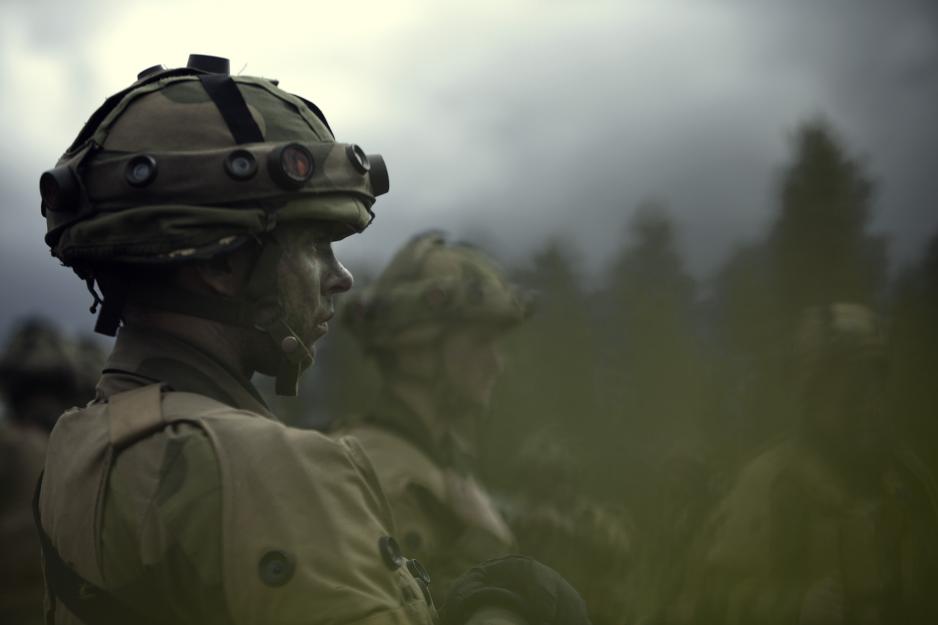Norwegian Defence Analysis of 2023: Norway’s Defense Is Not Good Enough

It is the extensive consequences of the war in Ukraine that first and foremost affect Norwegian security. (Photo: the Norwegian Armed Forces)
"It seems to be more important to have a defense that is visible in peacetime, than one that functions in war," says Espen Skjelland, at the Norwegian Defence Research Establishment. The defense analysis of 2023 shows that the Norwegian defense is to poorly equipped to face the new security situation in the north.
On Tuesday, the Defence Analysis of 2023 was presented. It shows that the Norwegian Armed Forces is not capable of solving its tasks in the most demanding of scenarios.
"Operative gaps within air defense and anti-submarine warfare will remain," reads the report prepared by the Norwegian Defence Research Establishment (FFI).
The report highlights an undermentioned air defense, a lack of ability to monitor land areas, and vulnerable communication systems, among other things.
It points to major deficiencies within areas such as supply, preparedness, communication, sanitation, and host country support. In sum, this means that the Norwegian defense will not function properly as an integrated system in war.
"It seems to be more important to have a defense that is visible in peacetime, than one that functions in war," says Espen Skjelland, Director of the Strategic Analyses and Joint Systems Division at the Norwegian Defence Research Establishment, during the presentation of the defense analysis.
Military activity in the north
The analysis clearly points out that even though Russia is weakened after a year of warfare, it does not entail a reduction of Russian military activity in Norway's immediate areas.
"It places demands on the Norwegian preparedness, while we also have to be prepared for major allied interest in operating military activity in the High North," the analysis reads.
However, the Norwegian Armed Forces is struggling financially.
Although the cost calculations show that the Norwegian Armed Forces' long-term plan is in economic balance in the 20-year period between 2024-2042, that is not the case in the time leading up to 2030. The challenges of the 2020s may make it necessary to postpone projects and measures,
Here are the FFI's overarching advice from the defense analysis
The Norwegian Armed Forces should direct more attention towards facing limited attacks and complex threats, not least through surveillance and preparedness.
The Norwegian Armed Forces should design a clear and realistic level of ambition and concept to strengthen the capability of high-intensive combat against Russian forces in the north. This should be done in close cooperation with Sweden and Finland within the framework of NATO. Until this has been clarified, the Norwegian Armed Forces' prioritizations and decisions should be directed toward the capability of denial of high-intensive combat on Norwegian territory. Allied integration is central in such a denial concept, but the concept must also ensure a minimum of national self-sufficiency.
The Norwegian Armed Forces should explore the opportunities which new technology provides in reducing emissions of greenhouse gases, especially in connection with training, exercise, and daily operations in our areas and in the acquisition of new maritime surface structures.
Nevertheless, the sector struggles to implement the plans.
"When the defense analysis of 2022 was presented, we had not anticipated the war in Ukraine and NATO's increased presence in the north. Now we must assess the opportunities that arise through the new, close cooperation following the war," says Skjelland.
He adds that the situation is more dangerous in our part of the world and that the uncertainty runs deep.
"No one should be entirely sure of what is right to do and we must avoid near-sightedness. That means not overreacting and focusing on what is happening right now, but also looking far ahead. Investments in defense personnel, materiel, and infrastructure are so taxing that we must plan long-term," says Skjelland.
Great power rivalry
The defense analysis also shows that increased activity creates a risk of the great power rivalry becoming more apparent also in Norway's immediate areas. Climate change will likely provide ice-free summers in the Arctic by 2030. In addition, it could provide new economic opportunities and increased activity but also increased tension in the region.
The threat now consists of complex threats and nuclear weapons.
"Although the High North is a relatively stable area with low political and military tension, Norway has for some time noticed Russia's more assertive policy. Russia's new maritime doctrine from August 2022 emphasizes the Arctic as an arena for resource extraction, shipping, research, and military activity in the coming years, and Svalbard is mentioned as an area of priority.
"The threat situation has changed and Russia's ability to spend money on defense is limited in the time forward. That means that a major attack will probably not take place, but that the threat now consists of complex threats and nuclear weapons," says Skjelland.
The Northern Fleet
The threat against Norway is also changing because of closer cooperation between de Nordic countries. However, the most important thing that the Armed Forces must keep their eye on, is what Russia can and will do in order to adapt in the long term.
That entails a greater emphasis on the Russian Northern Fleet and nuclear weapons that are located just a few miles from Norway's border with Russia in Finnmark.
"Greater emphasis on nuclear weapons means that the role of the Northern Fleet and its significance may increase. Russian authorities have also announced that Swedish and Finnish NATO accession will be met with counter-measures in the form of strengthened military presence on the Kola Peninsula, in Kaliningrad, and in the Republic of Karelia," states the analysis.

Espen Skjelland, Director of the Strategic Analyses and Joint Systems Division at the Norwegian Defence Research Establishment. (Photo. FFI)
Underfunded
The defense analysis also shows a significant underfunding of the Armed Forces.
Although the war in Ukraine has led to an increase in the military budget, FFI writes that it is at least NOK 30 million short in the time towards 2030.
Russia is testing the boundaries for what they allow themselves in regard to NATO countries.
"As a result of cost increment and the expedition of disbursements, the Armed Forces lack an average of NOK 3-4 billion each year in order to reach the ambitions of its long-term plan. There is a risk that the costs will exceed this level," writes FFI.
Hybrid threats
Senior Research Fellow at FFI, Tor Bukkvoll, is worried that hybrid threats become a stronger means of action from the Russian side, along with the mentioned nuclear threat.
"Former attacks have shown that Russia is testing the boundaries of what they allow themselves in regard to NATO countries. With the enormous support that Ukraine has received from the West, Russia may feel entitled to use stronger means. We know that the Kola base is crucial for Russia in regard to American missiles and the geopolitical level of tension in the Arctic is becoming increasingly tense," says Bukkvoll.
He believes that Russia will struggle with rebuilding the physical forces and equipment, especially because of western sanctions, and that we will see other types of Russian defense. However, he thinks a lot is depending on the outcome of the war.
"If the war ends with a Russian victory, Putin will continue. A victory in Ukraine is a victory against the West. That will result in a smug Russia. A loss may result in a bitter and weakened president, although it is difficult to envision a worsening of the situation. But unexpected things could happen," concludes Bukkvoll.
A shift in focus
Nevertheless, researchers agree that the NATO expansion will strengthen Norway's security in regard to Russia, but that the focus of NATO may shift from the High North and the Barents Sea down to the Baltic Sea.
«Although Norway, Sweden, and Finland have a joint understanding of the threat, our three countries have somewhat different geography and a different strategic focus,” it says in the report.
In the end, a united Nordic region in NATO will strengthen Norway’s defense abilities in the north because Russia will have a much longer border with NATO in the northwest. That makes an attack on Finnmark less likely.
“The Russian target with a strategic attack – to protect the base complex and the capacities on the Kola peninsula (bastion defense) – is not achievable without considering the fact that Sweden and Finland are about to become part of NATO. FFI and FOI therefore plan to look at Nordic scenarios for strategic attacks in 2023 together,” says the report.
Weakened civil defense
Nevertheless, the FFI has not looked at how an ever-decreasing population in Eastern Finnmark affects the defense of Northern Norway in the case of escalation.
What does the weakened civil footprint in the north have to say for the defense of Norway?
“I cannot say that we have taken a close look at that in this year’s report, so we do not have a good answer to that. We are studying and looking at many things that are important within Norwegian security and defense. But we are not researching everything,” is Skjelland’s response.
In other words, the researchers have not studied the lack of civil defense in the north and the report states that a currently under-explored problem is the consideration of the civil population in areas that are threatened or the subject of an invasion.
“Russia’s warfare in Ukraine means we cannot take for granted that the international law of war is respected under an attack on Norwegian territory. That means that we must plan to be able to evacuate the population in parts of the country. If necessary, we must also be able to use military forces to protect and win time in the event of such an evacuation. This may affect both the design of the Armed Forces’ structure, the operative plans, and the implementation of high-intensive military operations if deterrence fails.”
Also read
This article was originally published in Norwegian and has been translated by Birgitte Annie Molid Martinussen.




